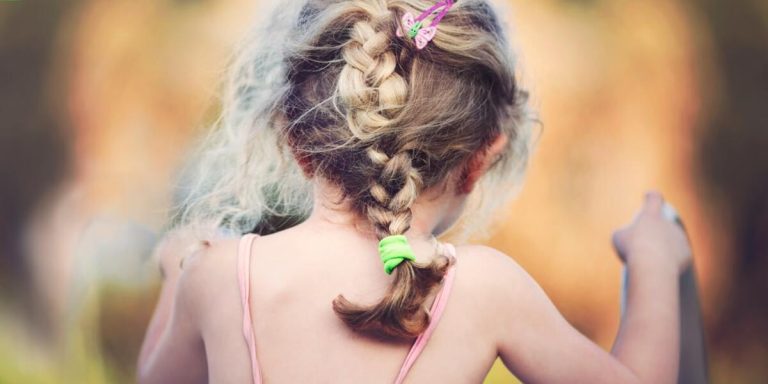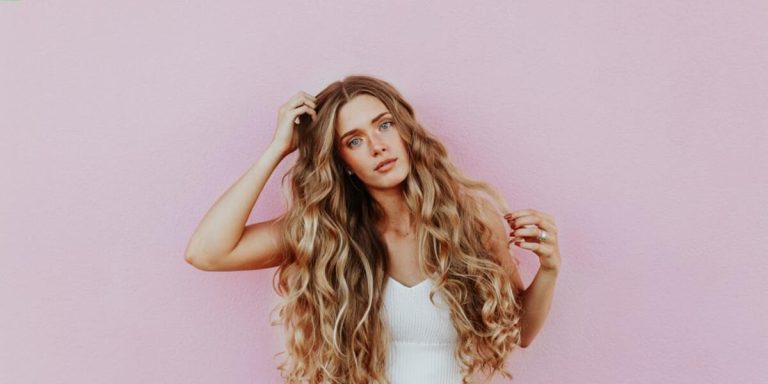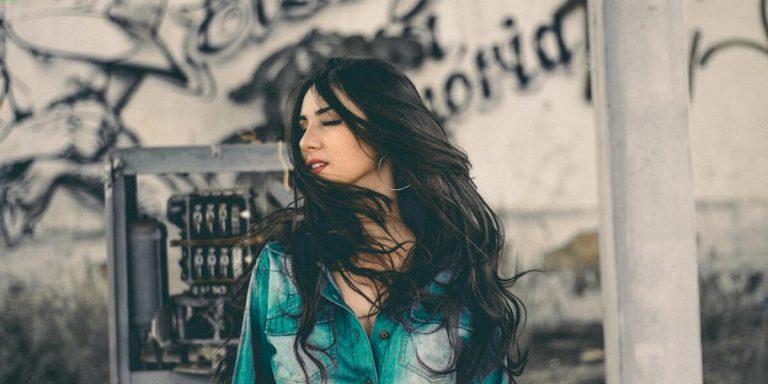Ayurvedic Hair Care: A Natural Approach to a Healthy Mane
Ayurvedic hair care has become a significant trend in the realm of beauty and wellness, attracting attention for its holistic approach towards healthy hair. A practice rooted in ancient Indian medicine, Ayurveda offers natural solutions to common hair issues like dandruff, dryness, premature greying and even hair loss. The power of nature is harnessed through botanicals packed with potent healing properties that provide nourishment right from the scalp down to every strand.
Our understanding of ayurvedic principles tells us that our physical health reflects on our skin and most notably—our tresses. By targeting imbalances or deficiencies within ourselves first rather than just focusing outwardly on symptomatic relief provided by contemporary products alone—we can achieve long-term health benefits both for our bodies and precious manes using Ayurvedic Hair Care methods.
Did you know?
Did you know that Ayurveda uses Bhringraj, also known as “Ruler of Hair,” to enhance hair growth and color? Its natural compounds have proven benefits in reducing hair fall and greying.
Understanding Ayurvedic Hair Care Principles
The philosophy of Ayurveda has been an integral part of Indian wellness practices for centuries, focused on achieving a balance between the body and mind. When it comes to hair care, these principles carry considerable weight as well. involves embracing natural remedies, promoting sustainable living while reviving your hair’s health with time-tested techniques.
Ayurvedic hair care nurtures the concept that our locks are deeply interconnected with overall nutrition and wellbeing. It focuses on using organic materials packed with essential nutrients like Amla (Indian Gooseberry), Shikakai (Acacia Concinna), Bhringraj (Eclipta Alba) etc., ensuring nourishment from root to tip without exposing strands to harsh chemicals often found in commercial products.
In 2023, amidst rising pollution levels and increasingly stressful lifestyles affecting our mane’s strength and lustre; adopting Ayurvedic traditions holds greater relevance than ever before.
A crucial facet of this ancient wisdom is understanding one’s ‘dosha’– Vata, Pitta or Kapha – which governs unique characteristics including scalp condition & hair type specific nutritional needs. So whether you’re battling dryness or excessive oiliness – there’s an ayurvedic solution tailored just for you!
The Role of Doshas in Ayurvedic Hair Health
The Ayurvedic hair care approach is deeply bound to understanding the role of “Doshas” – Vata, Pitta and Kapha – in our overall wellbeing. It basically emphasizes that a balanced state of these bio-energetic forces leads not only to good health but also luscious, strong and healthy hair.
Vata Dosha involves air and space elements. An imbalance can lead to dryness, which results in brittle or thinning hair. Counteracting an excess of Vata requires deep nourishment through oil massages with hydrating ingredients like sesame oil or coconut oil infused with herbs such as Bhringraj or Amla.
Pitta dosha signifies fire element reflected in body heat. When out of balance it may cause excessive sweating leading to oily scalp/hair conditioners resulting into unwanted dandruff flakes appearing on your shoulder! To maintain this balance use products embedded with calming natural components namely Neem tree extracts along-with Rosemary essential oils for best effects.
On contrary, Kapha dosha represents earth & water giving rise to conditions where increased sebum production causes greasy locks manifesting lackluster appearance much disliked by many among us who love voluminous flowy manes swinging laterally following rhythm set by wind!!! This situation calls for using light moisturizers free from heavy base emollients thus providing clean fresh feel post every wash session!
Natural Ingredients Commonly Used in Ayurvedic Treatments
“Ayurvedic hair care, rooted in the ancient medicinal practices of India, relies heavily on natural ingredients for treatments. Each ingredient is carefully chosen to nourish and strengthen our tresses while addressing specific issues like dryness or excessive oiliness.
Firstly, we have Amla or Indian Gooseberry. It’s a powerhouse loaded with essential fatty acids that penetrate into follicles making your hair softer, shinier and voluminous. Also being rich in Vitamin C; it prevents premature greying when applied regularly.
Then comes Bhringraj often referred as ‘king of herbs’ for hair growth because of its regenerative properties. Massage it onto your scalp and let this herb work wonders by revitalizing sebaceous glands thereby promoting new growth and reinstating lost color pigment from graying strands.
Shikakai follows next! Popularly used as a natural shampoo during ancient times due to low pH level ensuring perfect cleansing without stripping off natural oils from scalp.
Neem also plays an important role in Ayurvedic-inspired regimes mainly owing its antibacterial features combatting dandruff effectively along keeping any fungal infections at bay causing less itchiness translating to lesser chances of broken stands caused by habitual scratching!
Coconut Oil cannot be forgotten either which acts more like an elixir providing deep conditioning therefore enhancing sheen further whilst reducing protein loss leading towards fewer split ends essentially invigorating overall health greatly!
Creating an Effective Ayurvedic Hair Care Routine
Incorporating Ayurveda into your hair care routine can transform the way you treat and maintain your locks. Known for its rich history and natural approach, Ayurvedic treatments offer a plethora of benefits such as enhancing hair growth, reducing dandruff, combating dryness and preventing premature greying. Understanding how these practices work is key to creating an effective regimen.
Creating an effective Ayurvedic hair care routine begins with understanding your ‘Dosha’ or body type according to Ayurveda – Vata (air), Pitta (fire) or Kapha (earth). Each Dosha requires specific types of treatment; hence getting it right from the start brings in transformative results. From using unique herbal oils that suit each dosha to practicing scalp massages that stimulate blood circulation, every step matters in this regressive therapy.
Moreover, incorporating nutritional choices like including high protein foods or green leafy vegetables also forms part of sustaining healthy strands while following an ayurvedic lifestyle. Practising yoga for better blood flow towards head region bolsters the effects even further. In essence – personalization based on individual needs drives success in establishing a nurturing ayuverdic hair care regime.
Identifying Your Hair Type and Needs According to Ayurveda
The first step towards creating an effective ayurvedic hair care routine is at its heart, a deep understanding of your unique hair type and what it needs. Ayurveda believes that different individuals have varying constitutions or ‘doshas.’ These doshas namely Vata (air), Pitta (fire), Kapha (earth) govern our physical traits including the texture, thickness, color, tendencies of our hair.
If you notice thinning or dry hair with split ends experiencing frequent frizz and statics; these are classic signs of a Vata dominant constitution. Your aim should be to nourish and hydrate your tresses using moisture-dense products.
For those dealing with oily scalp yet facing premature greying or losing strands rapidly before their time; you’re possibly having more Pitta in your nature. You’d benefit from cooling therapies preventing further damage while promoting growth and delay ageing effects on follicles.
Lastly,a thick mane that’s strong but gets oily soon after washing signifies dominance by Kapha energies.Change up heavy shampoos for lighter ones which would strike balance without drying out too much.
Once identified aligning the right kind preparations becomes easier.Mapping this path involves combining beneficial herbs such as Amla,rare oils like Bhringraj,cold-pressed Sesame oil,and others infusing them into everyday use items.Coconut based moisturizers combined with ingredients known for treating specific issues can tackle challenges head-on!
Step-by-Step Guide to a Daily Ayurvedic Scalp Massage
Starting your day with an Ayurvedic scalp massage can be a fantastic approach to hair care and maintenance. It not only stimulates blood circulation in the scalp but also nourishes the hair roots, promoting healthy growth. So how does one perform this daily ritual?
Here’s a step-by-step guide.
Firstly, choose your oil carefully for this ayurvedic hair care routine. Coconut oil is an excellent option due to its cooling properties. Brahmi and Bhringraj oils are other good choices given their natures of strengthening strands and preventing grey hairs respectively.
Start by warming up a small amount (2-3 tablespoons) of chosen oil in your hands or microwave for 10 seconds if it’s solid at room temperature. Ensure that it is warm – not scorchingly hot – before proceeding.
Next comes application; apply the warmed-up oil on your scalp using gentle circular motions starting from the front towards backside area until all parts have been covered . Make sure you’re massaging just enough pressure so as not strain capillaries beneath sensitive skin areas around them while trying avoid applying too much product which would lead heaviness later causing discomfort throughout rest days’ activities .
Tackling Common Hair Problems with Ayurveda
Ayurveda, a centuries-old medicinal practice from India, offers reliable solutions for common hair problems we face in 2023. From excessive hair fall to premature graying, dandruff and scalp issues – Ayurvedic principles provide holistic remedies aimed at restoring balance and promoting healthy hair growth.
The first step towards ayurvedic hair care is understanding one’s unique prakriti or body constitution which could be Vata (air), Pitta (fire) or Kapha (earth). Each of these doshas has distinct characteristics that influence our health including our skin and scalp condition. For instance, individuals with predominant Vata tend to have dry scalps while those with high pitta may experience early greying.
Once you know your dosha type, customizing an effective ayurvedic regimen becomes easier; this involves using the right oils infused with beneficial herbs like bhringraj for alleviating baldness caused by certain imbalances or neem leaves concoction to tackle itchy-scalp conditions leading to dandruff. The potent mixture extracted from Amla berries also works wonders on dull and brittle strands bringing them back life.
Herbal Remedies for Dandruff and Scalp Disorders
Are you battling with dandruff and other scalp issues? You’re not alone, but fortunately, the ancient science of Ayurveda might have some solutions. Within its rich repository are numerous herbal remedies particularly beneficial for hair care.
Prepare a paste by grinding fresh neem leaves after boiling them until their color changes from green to blackish-brown. Apply this concoction directly onto your scalp twice weekly before washing off with warm water about half an hour later.
Sometimes dryness also leads to dandruff flakes becoming evident more so during fall seasons when humidity drops substantially leaving scalps parched out! Amla oil applied at bedtimes ensures adequate hydration throughout night periods preventing flake formations altogether!
Oil Infusions for Strengthening Weak or Thinning Hair
Harnessing the rejuvenating power of Ayurveda, an array of oil infusions have been specially formulated to address and combat weak or thinning hair conditions. As part of your ayurvedic hair care regimen, these natural remedies not only foster stronger roots but also promote overall wellness.
First off, there’s Bhringraj Oil. Known as the ‘King Of Herbs’, this potent infusion has long been heralded for its effectiveness in preventing premature greying and promoting healthy regrowth. A few drops massaged deeply into your scalp daily can do wonders for both hair health and thickness over time.
Next up is Amalaki or Indian Gooseberry Oil which boasts a high concentration of vitamins C – a vital component needed by our bodies to produce collagen that strengthens our follicles while warding off damage caused by harmful free radicals we come across on day-to-day basis.
Another worthwhile addition could be Brahmi oil celebrated for boosting memory cognitive functions; it also does marvels when applied onto tresses directly! Rich with antioxidants saponins (bioactive compounds), this unique tonic nourishes each strand from root-tip ensuring reduced breakage considerable increase density volume alike!
Conclusion
In essence, ayurvedic hair care isn’t just a fad or trend to try out. It is an age-old holistic method focused on the overall health and wellbeing of your mane. The key lies in understanding that our hair reflects our internal health condition ─ an aspect well-catered for by Ayurveda’s personalized approach.
We hope this blog post has enlightened you with plenty of insights about adopting natural remedies into your regimen. Remember, every strand does matter! So why wait?
Start exploring more around on our website where you’ll find even more secrets to perfect “Hair Care and Maintenance”. Let nature begin its nurturing work today!







